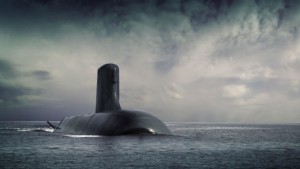Home » Commentary » Opinion » Subs reveals the twisted logic of industry policy
· Australian Financial Review
 When the PM announced Australia will spend $50 billion or more on 12 new submarines, he claimed it will help the economy transition to the 21st century. He went on to say advanced manufacturing would generate skills and jobs for decades, and that the spill-over benefits to the economy are immense.
When the PM announced Australia will spend $50 billion or more on 12 new submarines, he claimed it will help the economy transition to the 21st century. He went on to say advanced manufacturing would generate skills and jobs for decades, and that the spill-over benefits to the economy are immense.
If that all sound familiar, it’s because it’s the same flawed claims made by automotive manufacturers to justify $30 billion of wasted support over the past 15 years. The government was right to reject those claims when it took office, and wrong to repeat them now.
Since the announcement of the Future Submarine project in 2009, it’s been clear it has been driven by political considerations in South Australia. Even before Defence had settled on what capabilities it desired, it was announced that the submarines would be built in Adelaide.
This is despite a study by RAND Corporation finding the cost premium for building ships in Australia could be as high as 30 per cent to 40 per cent. The Prime Minister claims the cost premium is much less than this, but has declined to provide the data that would prove this one way or the other.
Indeed, one of the defining features of this project has been continuing uncertainty as to what it will cost.
In 2009, the Australian Strategic Policy Institute suggested $36 billion was the likely cost of a 12-submarine build in Australia. In 2011, Rear Admiral Rowan Moffitt suggested the total program cost of the Future Submarine project could be $40 billion, a figure he described as “eye-watering”.
On the other hand in 2012, the Kokoda Institute published a report suggesting the submarines could be built for less than $20 billion. TKMS, the German submarine bidder, recently offered a similar price tag for its bid – including any premium for an Australian build.
Given that the French sub is a concept design, based on a nuclear-powered submarine not yet in service and already facing cost and schedule blowouts, the likelihood the cost will be contained to even $50 billion is remote.
If your main motivation was to get the best value for money, a cost blow-out of between $10 billion and $30 billion would be completely unacceptable. It is only by the twisted logic of industry assistance, with its primary driver being seen to be investing in Adelaide and shipbuilding, can the increased spend is considered virtuous.
The days of protectionism and industry welfare should be behind us. It does not create sustainable jobs or economic benefits; it entrenches inefficiency, waste and economic loss. Australia has long since stopped manufacturing aeroplanes. Soon we will no longer manufacture cars. There is no reason for us to manufacture bespoke submarines either.
Simon Cowan is research manager at the Centre for Independent Studies and author of the report Future Submarine Project Should Raise Periscope for Another Look.
Subs reveals the twisted logic of industry policy